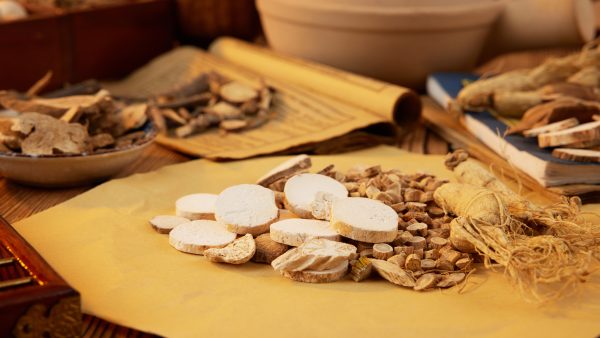
Quartz is a hard, wear-resistant, and chemically stable silicate mineral. It is typically colorless or milky white, but can exhibit varying colors due to the presence of various impurities. It is translucent, has a hardness of 7, is brittle, lacks cleavage, has a conchoidal fracture, and has an oily luster. Its relative density is 2.65. It exhibits optical rotation and piezoelectricity, but poor heat conductivity and is non-conductive. Its electrical, thermal, and some mechanical properties exhibit significant anisotropy.
Quartz has a wide range of applications. After undergoing a series of production and processing steps, it is used in numerous traditional and emerging industries, including the glass industry, foundry industry, ceramics industry, refractory industry, chemical industry, oil extraction, water purification materials, building materials, new energy photovoltaics, electronic semiconductors, optical fiber, optics, electro-optical sources, high-end fiber materials, and industrial fillers.
In addition to the aforementioned applications, quartz also has a particularly niche application: in traditional Chinese medicine.
According to relevant literature, quartz has calming, soothing, and lung-moistening, cough-relieving properties. Some scholars believe its mechanism of action is closely related to the presence of silicon in various mucopolysaccharides, as well as the subtle influence of silicon’s inherent semiconductor properties on the human electromagnetic field. This mechanism has both biochemical and biophysical effects.
How is quartz prepared for use in traditional Chinese medicine? According to processing regulations published by relevant authorities, white quartz is prepared by removing impurities from the raw medicinal material, washing, drying, and then grinding or pounding it. The finished product is irregular granules or coarse powder, angular, white or milky white, with an uneven surface and a fatty sheen. It is extremely hard, heavy, odorless, and tasteless. Vinegar-white quartz is prepared by taking clean white quartz, pounding it into small pieces, placing it in a suitable container, and heating it over high heat until it turns red. After removal, it is immediately poured into vinegar to quench it, removed, dried, and ground into a coarse powder. For every 100 kg of white quartz, 30 kg of vinegar is used. The finished product, vinegar-white quartz, is a fine powder with a yellowish-white color, a heavy texture, and a vinegary aroma.
The use of quartz in traditional Chinese medicine has a long history. It was first recorded in the Shennong’s Herbal Classic, where it was listed among the 18 top-grade medicinal herbs. It has a “sweet and slightly warm flavor. It treats thirst, impotence, cough, and chronic chest and diaphragm coldness. It replenishes Qi and eliminates rheumatism. Long-term use can promote weight loss and longevity. It grows in the mountains and valleys.” The Famous Doctors’ Prescriptions states: “White quartz grows in the mountains and valleys of Huashan and Mount Tai. It is as large as a finger, two or three inches long, with six sharp sides, a clear white luster, and is especially good if it is five or six inches long.” In Sun Simiao’s “Prescriptions for Emergencies Worth a Thousand Gold Pieces” from the Tang Dynasty, white quartz is listed in the “Upper Jade Section,” stating that it is effective against horse-eyed poisonous insects. Prescriptions containing white quartz mentioned in the book include Baiwei Pills, Qinjiao Pills, and Wushi Decoction, among others.
The world-renowned Compendium of Materia Medica, written by Li Shizhen during the Ming Dynasty, lists white quartz in the section on metal and stone, stating that it has a “sweet, slightly warm, and non-toxic” aroma. Its main treatments include “evil spirits in the heart and abdomen, heart and abdominal pain in women, calming the heart, treating stomach coldness, nourishing hair, brightening the complexion, treating palpitations, calming the soul, strengthening the yang meridian, and promoting lactation.” It also mentions: “White quartz is a medicine for the hand Taiyin meridian, the yang and yin qi divisions, and can treat paralysis, lung abscesses, and dryness. However, as a stone, it can only be used temporarily and not for long-term use.” An appendix includes a method for taking quartz.
Since the beginning of the 21st century, research on mineral medicines has increased significantly and become increasingly sophisticated compared to previous centuries. Works such as “Mineral Medicines” (2005), “Mineral Medicines and Their Applications” (2012), “Color Atlas of Mineral Medicine Identification” (2021), and “Mineral Medicine Resources of Qinghai” (2022) all mention white quartz. However, is the use of quartz as a medicine scientific? Some literature contains statements such as the following: “According to the principles of five-color therapy, blue quartz is suitable for the liver, white quartz for the lungs, black quartz for the kidneys, yellow quartz for the spleen, and red quartz for the heart. It has significant therapeutic effects on women’s heart and abdominal pain, stomach cold, and chest and abdominal evil spirits.” Is there any scientific basis for this? This is a question that remains to be verified. Without sufficient experimental data and theoretical support, its safety and effectiveness are bound to be questioned.
